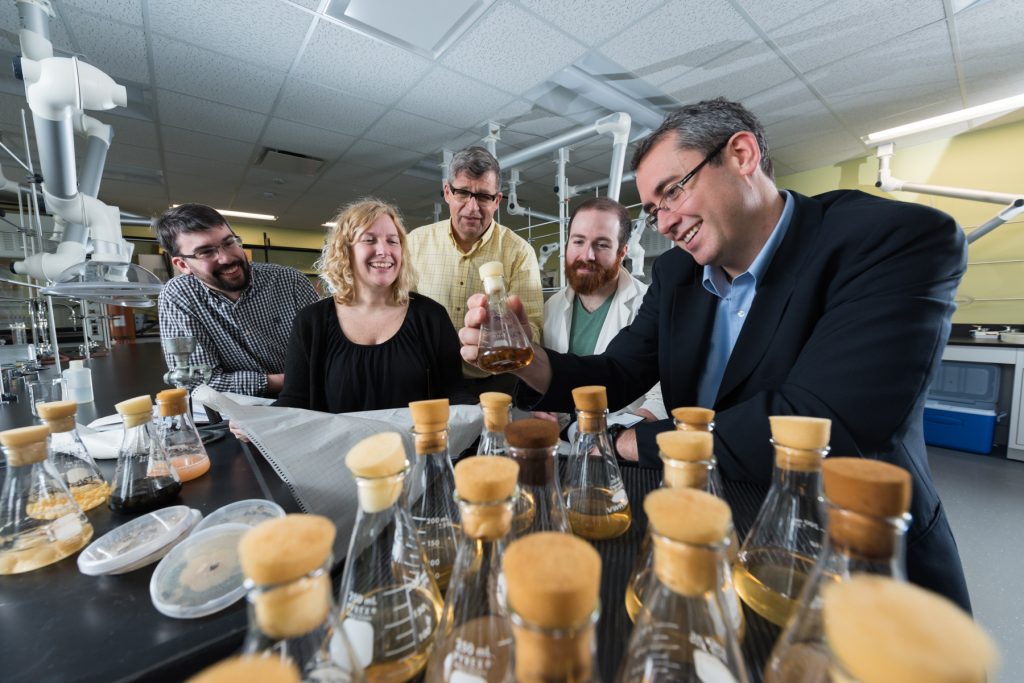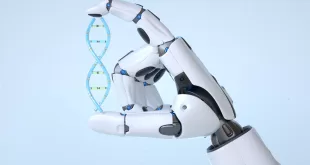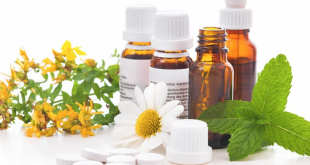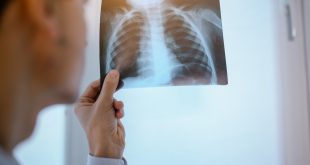By Jana Manolakos

Resolute is one way to describe Christopher Gray. A member of the Natural Products Research Group and Professor of Organic Chemistry at the University of New Brunswick (UNB), Gray is on a relentless, lifelong search for new molecules, that in the distant future, might hold the key to new therapeutic drugs. He’s searching for a needle in a haystack, a quest that began in 1995 during his graduate studies.
“I’m a natural products chemist. I just want to find new natural products with interesting chemical structures,” he said. His current research is focused on the isolation and identification of biologically active organic compounds from plants, algae and microorganisms.
All living organisms contain a huge number of organic molecules or primary metabolites, most of which are essential for life. Another group of molecules, while not essential for life, give the organism some benefits if it produces them. Gray is focused on these secondary metabolites, which are structurally complex and may harbour biological activities for new therapeutics.
“The question comes down to where are you going to find your new natural products? That really relates to looking at biological diversity that hasn’t been investigated heavily,” he explains.
The Natural Product Research Group’s search is guided by global ethnobotanical data – plants that have documented uses as traditional remedies and therapeutics form the foundation of their research. However, Gray is not only interested in the medicinal plants as a source of new molecules; he’s also interested in the many fungi that inhabit their tissues. These fungi, or endophytes, may never have been found or investigated before.
He cautions that the molecules he discovers will likely not have any bearing on new drugs in the future. “The problem is that to get one natural product to market as a drug, you have to discover thousands and thousands of natural products,” he explains. He holds that the likelihood of isolating a molecule that may lead to a therapeutic agent is extremely low.
“But the bottom line is if we don’t try, we’re going to continue with the problem that we’re facing today with antibiotics where a few decades ago, they decided to stop looking for new ones. Fast forward to today, and we have hardly any antibiotics that are really very useful.”
In a recent published study, his group isolated molecules that kill Mycobacterium tuberculosis and Staphylococcus aureus in laboratory-based assays. “They will probably also kill a whole bunch of other things, quite possibly humans. And that’s where we have to be careful. Not one of those molecules is anywhere close to going into drug development.”
It begins with finding the right plants to study, plants that have a documented history of being used medicinally. “But it’s not a trivial thing to traipse off into the woods and find a specific species of plant. That’s kind of challenging, made more so by the fact that there are less and less botanists in the world because apparently botany is no longer a science that people need to study,” he adds wryly.
Isolating the fungi from these plants is also not easy, requiring the right laboratory conditions to grow. The sample is then fermented and natural products, often numbering in the thousands, are extracted. Out of these, the researchers may be interested in only one. “So now you’ve got quite a challenge in purifying that down to the point that you’ve got a single pure compound,” notes Gray.
Sometimes there’s not enough material to actually isolate a compound in the required amount, so the entire process starts again. “Once you’ve got to the single pure compound, then you’ve got to work out what its molecular structure is. That’s a challenge. So every step of the way, I guess, is a challenge and that’s what really makes it fun.”
The team works out of a Level 2 microbiology lab where they run biological assays. The purification process uses high-performance liquid chromatography equipment. For structure elucidation, the team accesses a nuclear magnetic resonance spectrometer that’s 100 kilometres away at the Fredericton campus of UNB. For mass spectrometry, they send samples to the University of Prince Edward Island.
Gray is concerned about access to this essential equipment for his research students. “These are the tools of our trade and should be on hand for my team to use daily,” he says. However, the equipment is expensive, funding is severely limited and the research is too early to entice commercial interests. He receives $29,000 annually from NSERC to cover operating costs for his group of three to five grad students.
“I mean that’s the problem. We’re at the very, very start of the discovery process. Everybody knows that the likelihood of isolating a molecule that can make them any money is really small. That’s why Big Pharma moved away from natural products a few decades ago. The amount of investment required to get your molecule through all that drug discovery and development to market is massive. And knowing the likelihood of that happening and the number of molecules that get dropped along the wayside, people really don’t want to be investing money in this until they’re sure that there’s going to be some kind of payout for them at the end. If we are only going to fund research where there is an obvious, immediate benefit, there’s going to be a whole bunch of stuff left unknown.”
For Gray, the true value lies in isolating molecules and discovering new molecules – without the need to know how they’ll be applied in the future. “Right now, we can’t even imagine how some of these molecules might end up being used, and we might not know that for another 20, 30, 40, 50 years,” concludes the unwavering explorer.
 BioLab Business Magazine Together, we reach farther into the Canadian Science community
BioLab Business Magazine Together, we reach farther into the Canadian Science community





